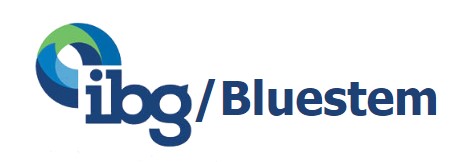Helping the seller anticipate and negotiate issues that can cause deviations from the expected sale proceeds can add unexpected value to involving an experienced M&A intermediary.
In a business sale, forewarned is forearmed. An informed seller understands, and can be prepared for, the likelihood that the net value of their business at sale will be impacted by normal costs of a transaction and a wide variety of contractual adjustments.
Through our many decades of facilitating the purchase and sale of private companies, IBG Business’s M&A intermediaries have encountered nearly every conceivable adjustment, holdback, offset, and settlement issue in a complex business sale. This article is offered with the hope that it will help you:
- anticipate and prepare for changes in, or delayed realization of, your final price;
- understand that not all final proceeds erosions and delays are inevitable; and
- appreciate the M&A advisor’s role in influencing the deal’s outcomes to benefit the seller by reducing risks, erosions, and delays while gaining a best overall value result, price and terms.
“The surprise to a lot of sellers is all of the different things that are either fees or adjustments to closing or escrow amounts,” says Bob Latham, managing partner in IBG’s Texas office. “They don’t fully understand where the funds went. They hear the offer price, and they expect that to be the check amount at closing.”
IBG co-founder John Johnson (Oklahoma) provides this perspective.
“From the outset, price is front and center in the negotiations. For both parties, thinking of deal price needs to be tempered by deal terms, which together determine the deal value. Informed expectations and being prepared to help manage the factors through closing go a long way in ultimately preserving the seller’s joy in completing what is often the biggest financial transaction of their life.”
Potential value adjustments can start with the buyer’s letter of intent (LOI). Experienced buyers know precisely what they want to achieve in an acquisition. Their LOI will outline various conditions that may trigger terms adjustments, withholdings, and escrows – each of which has its place in a fair and equitable deal, with the devil in the details.
“In preparing for offers and subsequent negotiations,” John Johnson continues, “the M&A advisor should help the seller anticipate and negotiate the conditions, but their ultimate impact may evolve and become clearer throughout the sale process. Staying in front of these in preparing, mitigating, and negotiating these is vital to preserving your best value. Too often a member of a seller’s deal team may accidently cede value by failing to see the entire landscape of the deal and an experienced M&A intermediary can help keep this from occurring.”
MAJOR FACTORS
Factors that impact the final purchase price and the cash you receive at closing generally fall under one of five categories:
- professional fees and taxes,
- third-party transfer costs,
- holdbacks,
- deferred payments, and
- settlement issues.
Professional Fees and Taxes. “Accounting, legal, M&A broker commissions, escrow, and other professional fees are factors to be expected,” says Matt Frye, managing partner in IBG’s Oklahoma office, “along with fees paid to a tax accountant for calculating the sales and transfer taxes on the transaction. That’s where I hear a lot of gulps and gasps.”
The payment of taxes is another factor in this category. Payment of deal-related sales or transfer taxes can substantially impact deal value. Although personal income taxes are not a settlement adjustment, they are important in a seller’s net value. Managing deal structure can have a very big impact on the amount of taxes that will result. Again, an M&A intermediary’s experience can be very valuable in anticipating how to help minimize this bite.
Third-Party Transfer Costs. Other common fees may include costs going to third parties to conclude the sale transaction.
For example, if lessor approval is required for transferring leased equipment or property, some compensation may need to be made to enable the transfer, especially if the lease has a below-market rate. Alternatively, if the lease rate is increased in a transfer, this may reduce the post-sale profitability to the buyer and a deal price concession may be in order.
Also, if you are selling distribution rights, there may be fees associated with that transfer as well.
Holdbacks. Holdbacks are common elements of a business sale. Key attributes are how much, for how long, and to cover what.
“Buyers can require money to be held in escrow to cover potential liabilities that were either not disclosed or not known at the time of closing,” says IBG’s Jim Afinowich (Arizona). “Indemnification holdbacks and working capital holdbacks can be 5% to 10% or more of the purchase price, depending on the buyer’s interpretation of risk.”
Bob Latham notes that, in his experience, a working capital holdback might be of relatively short duration – 60 to 90 days – while “the indemnification or risk mitigation holdback is often 12 to 18 months, or even 24 months on the very high side. For these types of holdbacks, sellers will eventually get most of their money, but it may take a while.
“Also, net working capital is going to be calculated as of a certain date, typically the closing date, but because of bookkeeping, it may take 30, 60, or 90 days to figure out what that actual number is. In the meantime, you will have an escrow holdback of the net working capital until you reach the settle-up date, where that is cleared out after the bookkeeping is done.”
Normally a deal requires the seller or the buyer to pay the debts of the business as of closing. Another type of holdback, of a more permanent nature, uses cash from the sale to pay off the seller’s debt or other obligations.
“The seller may want to have all of his equipment loans paid out of closing proceeds,” Jim Afinowich said, “because the buyer is usually buying the business on a cash-free, debt-free basis. If there are equipment loans, bank credit lines, most any kind of financing on the company, there will be money taken out of escrow to pay for all of those debts.”
Deferred Payments. Deferred payments often take the form of seller financing or an earnout, both of which are fully negotiated and, if executed as agreed, should pose little risk of surprise at closing.
As we discuss in our article, “Seller Financing a Key to Attracting More Buyers, Maximizing Your Sale Price,” the great majority of business sales involve some form of seller financing, with the higher the selling price the greater the likelihood of a seller carryback.
The seller might be the only lender in the deal, receiving a down payment (typically 30% to 90% of the purchase price) and carrying back the unpaid balance for five to seven years.
An earnout (see related article) is a contingent payment arrangement that is often used to bridge a valuation gap.
As Jim Afinowich explains, “A buyer says, ‘I want to pay you X amount of money,’ and the seller says, ‘the business is worth a lot more than that because of its growing earnings. I want the extra that you’re not valuing enough.’ The buyer counters, ‘Well, I don’t mind paying what you’re saying it’s worth if the company increases in revenue and profits. So if the numbers actually improve, as you’re saying, I will pay you this, but if they only increase half as much as you say, then I’ll pay you half of the extra.’”
Settlement Issues. Our fifth category includes issues that the parties identify during the negotiation and due diligence processes and that will be charged or credited at close.
Common settlement issues deal with prorated costs. As a simple example, if the closing date for the business sale is in the middle of the month, and you have paid the rent and your equipment leases for the full month, you would be entitled to receive a prorated credit.
Other issues might include employee-related accruals – such as vacation pay and sick pay – that have been accrued by the seller and may be negotiated to transfer to the buyer.
“What I’ve seen as a settlement issue at close is who’s responsible for what,” says Matt Frye. “For example, if the buyer learns that one of the employees has a deal with the seller, where she’s been able to accrue vacation for three years because she wants to go to Europe for six weeks, that’s a liability that the buyer will want to resolve before closing.”
Conceptually, as of the closing or proration date, everything prior to it – all the income and expense – is that of the seller, and everything that follows is attributed to the buyer, so it will be important to establish a clean cutoff for the settlement issues. Some issues may not be known on the closing date and will need to be adjusted by the parties after the close.
Some industries, such as manufacturing and construction, are prone to adjustments and settlement issues involving billing timing or work-in-process considerations. At the closing or proration date, the company may have units that are only partially completed, and the seller will want to be credited for their investment of labor and materials and receive an equitable share of the ultimate profit as well. In such cases, the parties will likely calculate the percentage of completion for each unit or apply an agreed percentage across the board.
CONCLUSION
In this article we have identified five major categories of factors that can change the value of a business sale as it progresses from letter of intent to closing. As noted, some adjustments may be permanent, while others merely delay payment until the post-closing issues are resolved and accurate calculations and adjustments can be made.
In most deals, especially where an experienced M&A broker is involved, the seller will be made aware of the issues before they arise and are negotiated.
Nevertheless, until the actual numbers appear in print, the cash due at and after closing will likely be a moving target. Reducing the surprise to the seller and managing potential adjustments require the involvement of an experienced M&A intermediary to protect the seller’s interests and facilitate communication throughout the process, both before and after the deal closes.
To learn how the M&A professionals at IBG Business add value in the sale of a private company, visit www.ibgbusiness.com and contact an IBG partner near you.




